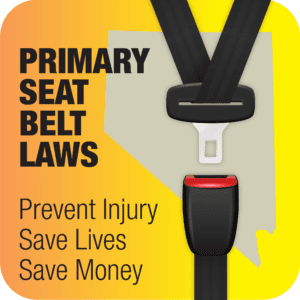 The University of Nevada, Las Vegas (UNLV) recently published an in-depth analysis of Nevada’s linked crash-trauma database in the latest volume of their Traffic Research and Education Newsletter (TREND). The database compares motor vehicle crash and hospital outcomes for Nevada trauma center patients by seat belt use status. Their analysis found that seat belt usage is associated with a much lower risk of death, disability, or hospital/ICU stay—also affecting the length, and therefore cost, of stay.
The University of Nevada, Las Vegas (UNLV) recently published an in-depth analysis of Nevada’s linked crash-trauma database in the latest volume of their Traffic Research and Education Newsletter (TREND). The database compares motor vehicle crash and hospital outcomes for Nevada trauma center patients by seat belt use status. Their analysis found that seat belt usage is associated with a much lower risk of death, disability, or hospital/ICU stay—also affecting the length, and therefore cost, of stay.
The data in their analysis showed that trauma outcomes for occupants wearing a seatbelt were less severe than those that were not. Unbelted occupants also experienced more significant injuries to almost every part of the body. This is also means that unbelted occupants experienced longer hospital stays, leading to more expensive hospital bills. Unbelted occupants also more frequently died from their injuries or required treatment at a rehabilitation facility.
What can we do to increase seat belt use? The UNLV research demonstrates that primary seat belt laws increase seat belt use. Centers for Disease Control and Prevention (CDC) calculations indicate that passing a primary seat belt law in Nevada could save 13 lives, prevent 1,206 injuries, and save $48M annually (CDC, 2015).

